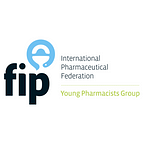(FIP Patient Safety Development Goal 19)
By: Rafa Al Khalifa
“MEDICATION WITHOUT HARM” serves as a reminder to all parties involved that the end user, or “the patient,” is who matters most when it comes to safety. In May 2019, the WHO announced the 17th of September as the annual WORLD PATIENT SAFETY DAY. Patient safety is a public duty, not an exclusive domain of a pharmacist or healthcare professional. Serious harm can occasionally result in inappropriate medication prescription, dispensing, administration, or monitoring.
Product, human, manufacturing, infrastructural, and prescription aspects can all be included when systematically assessing the factors that contribute to patient safety. (4,5) A prominent area of attention in global health is patient safety, which encourages societal involvement and raises awareness of the benefits of collaboration in lowering the risks of medication misuse and patient harm. (2)
The Pharmaceutical Manufacturer’s Nightmare & Blessing
Poor patient safety management has reportedly come at a significant cost. 42 billion US dollars are lost each year due to preventable medication errors. A substantial factor to disability and mortality is thought to be poor and unsafe patient care practices. Diagnosis, prescription, and medication management are the main patient care activities that result in errors.
According to the WHO, prudent investments in improving patient safety, such as encouraging patient engagement, had up to 15% improved effectiveness, boosted the performance of the healthcare system, and reduced both direct and indirect expenditures.
It’s a global commitment to achieve Universal Health Coverage (UHC). A fundamental element of UHC is patient safety. By offering readily available, reasonably priced, safe, efficient, and high-quality medication and care, UHC aims to foster patient protection and experience. (2)
Trends In Pharmacovigilance and Patient Safety
As mentioned above, patient advocacy and involvement have demonstrated great success in bridging gaps and reducing the knowledge shortfall. Now, a number of players are making investments in this area. The regulatory requirements to assign well-trained and specialized people to handle the patient safety departments in healthcare & pharmaceutical companies is another human capital development trend that has been widely implemented. A real-world illustration of this is the United Arab Emirates, where each healthcare facility is required to appoint a Qualified Person For Pharmacovigilance (QPPV) who is solely in charge of patient safety activities.
After the introduction of artificial intelligence (AI) and data mining, the healthcare industry has recently experienced tremendous innovation and advancement. Similar to how data collection, analysis, and risk prediction capabilities have improved, so have patient safety systems. (1,3)
Pharmacist Role in Patient Safety
Industrial pharmacists adhere to safety and quality standards in order to create the most effective molecules. Pharmacy professionals work closely with other healthcare professionals to produce the best patient care possible across the whole treatment process, from hospitals to community and long-term care pharmacies. Pharmacy interventions are critical in all of these settings and consistently have a favorable influence on patient safety.
Putting into practice the “five rights” approach is one well-known pharmacist activity in the patient safety and care journey. The hospital, community or clinical pharmacist ensures that the RIGHT patient is receiving the RIGHT medication in the RIGHT dose through the RIGHT route at the RIGHT time. Moreover, pharmacists have made a significant contribution to improved population awareness, patient safety, decreased hospital readmissions, and overall health costs through their patient care services (such as screenings, managing chronic conditions, facilitating medication management, adherence, and access, administering vaccines, and liaising with other healthcare professionals). (2,6)
References:
1. Academic.oup.com. [cited 2022Oct13]. Available from: https://academic.oup.com/database/article/doi/10.1093/database/baac071/6682867?utm_source=TrendMD&utm_medium=cpc&utm_campaign=Database_TrendMD_1&login=true
2. Global Patient Safety Action Plan 2021–2030 [Internet]. World Health Organization. World Health Organization; [cited 2022Oct9]. Available from: https://www.who.int/teams/integrated-health-services/patient-safety/policy/global-patient-safety-action-plan
3. HealthLeaders. 4 patient safety trends for 2020 [Internet]. HealthLeaders Media. [cited 2022Oct9]. Available from: https://www.healthleadersmedia.com/clinical-care/4-patient-safety-trends-2020
4. Patient safety [Internet]. FIP Development Goals. 2022 [cited 2022Oct9]. Available from: https://developmentgoals.fip.org/dg19/
5. Start practical guidance cooperating organizations join WHO CAMPAIGN [Internet]. World Patient Safety Day. [cited 2022Oct9]. Available from: https://patient-safety-day.org/
6. American Pharmacists Association Pharmacists’ impact on patient safety [Internet]. [cited 2022Oct9]. Available from: https://www.pharmacist.com/Portals/0/PDFS/Practice/PharmacistsImpactonPatientSafety_Web.pdf?ver=dYeAzwlN3-PG9eSkMMsV-A%3d%3d
